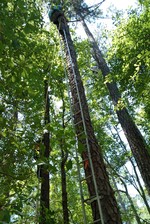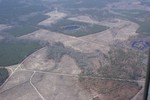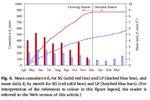Seth Younger
Postdoctoral Research Associate
The Jones Center at Ichauway
Forest Landscape Ecology Lab
Ecohydrology Lab
My research focuses on the hydrologic effects of forest and land management practices in the southeast U.S. I joined the Landscape Ecology Lab at the Jones Center at Ichuaway in January 2021 as a Postdoctoral Research Associate where I’m working on modeling the streamflow effects of Longleaf pine restoration and other NRCS conservation practices on the southeast Coastal Plain. Evapotranspiration is the largest terrestrial water flux after precipitation, thus by reducing evapotranspiration we can increase groundwater recharge and streamflow. My dissertation research quantified watershed scale evapotranspiration in the southeast U.S and precipitation partitioning in young bioenergy plantations.
Interests
- Hydrology
- Practical GIS Applictions
- Soils and Geomorphology
Education
Ph.D. Forestry and Natural Resources, 2020
University of Georgia, Warnell School of Forestry and Natural Resources
M.S. Geography, 2013
University of Georgia, Geography Department
BS Geography, 2010
Radford University, Geography Department








